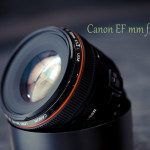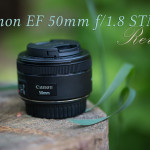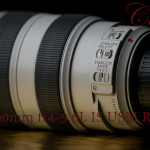We live in a digital age. An age where not only is the photography digital, but the most common way that photography is shared and viewed is through digital means. Many of my wedding or portrait sessions are transacted without my producing one print of any kind; the whole session begins and ends digitally. It used to be that I would create physical media for sharing work with a client or providing them proofs, but now I most often create an online folder that I share digitally with them (frequently within 24 hours or less).
I output JPEGs from Lightroom for clients, for storage and backup, for sharing through social media, for articles and reviews, and for any number of other reasons. I’ve always been cautious about outputting the right kind of JPEG for each application, from the dimensions to the color space to the overall quality. Some clients want an image in a particular file size, and in those moments I’ve been conscious of the relation between the image size and the file size, but for the most part I’ve just taken for granted that if you want a high quality JPEG you are going to have to take the hit of the file size.
That is, until I found JPEGmini Pro. I was approached to try the program from an industry friend, and agreed to give it a spin. JPEGmini claims to significantly reduce the file size of JPEGs without any loss of image quality, and, most importantly, worked not only as a standalone program but as a plugin for Lightroom – my choice of software for both the import and export stages of my workflow. The full implications of all this would mean to my workflow were not immediately apparent, but as I began to use the software the advantages began to add up.
- Storage space. Storage has never been cheaper, but taking up less space is always good. More importantly to me, I try to make cloud backups of my work, and the speed of the available internet connection in my area is limited to “up to 1mps”, which literally means more like .7mps at best. Smaller file sizes means faster uploads.
- Which has helped with everything in my workflow that goes to my website. Not only am I able to upload more quickly, but the smaller footprint in galleries means that I spend less time waiting for thumbnails to appear or to work with images in general. Time is money!
- Clients are able to get their images to load or download more quickly. That 500mb of images is now under 100mb.
- It is now easier to email multiple files without running into email server limits.
- What would have taken a DVD in physical storage for a client now fits on a CD (or beyond that what would take a BluRay disk now takes a DVD).
- I now create cloud backups in higher resolution because I’m no longer concerned about the size of the files.
The advantages are endless, but that’s only true if the software isn’t costing you time to use and if the claims regarding image quality are true. Let’s examine both of these aspects.
As I said, I didn’t initially seek this software out, so I didn’t have a strong drive to make it work at all costs. Fortunately I didn’t need it. I chose to install the program as a Lightroom plugin since this is my primary need. I do have some experience installing Lightroom plugins, so I didn’t have any kind of issue. That aside, though, I don’t think the process should be overwhelming for anyone. I was ready to go within a couple of minutes of initiating the process. In Lightroom the “configuration” is very simple. JPEGmini shows up on the lower left side of the Export dialogue box under the heading “Post-Process Actions” and you essentially choose for it to be on or off (double click it). That’s pretty much it, as all of its magic runs under the hood.
While I haven’t run any diagnostics as to whether or not there is any time impact on export I can say that I literally have not noticed any difference in export speed. Whatever the program does, it does quickly. That’s not to say that someone might not notice a bit of lag on a lower-specced system than mine, but I’ve not read of other users complaining of any such issue. So the answer to the first question is absolutely “no”; using the plugin is not costing me any extra time.
What about the claim to be able to create a reduced file size footprint (up to 1/8th the uncompressed size) without any loss of quality? If there is any loss of quality, I can’t see it. I have examined a number of images at various sizes compared with uncompressed copies and I simply cannot see a difference in image quality. If I can’t see it when I’m purposefully looking for it, then others are definitely not going to see it when they aren’t even looking for the difference. The company seems to make good on its claims.
And to take it a step further, here is a full size image that you can download both without the JPEGmini software enabled and then with it enabled. Click on the image to open it in another window. Note the huge difference in load times for the two images.
If you are too lazy to download and compare, here is a view in Lightroom after I imported the images back into Lightroom and put them side by side. At a pixel level you might be able to find some minute detail that is different if you put some time into it, but I’m sure you can agree that there is little to any discernible difference in the quality even that this extreme magnification.
 But here’s the difference – one of these files is 11.2 MB; the other is 2.73 MB. That’s a huge difference! In our full size sample the uncompressed image is 11.2mb; the file run through JPEGmini is 2.73mp – making it only .24x the original file size – over 75% smaller. What is the company’s claim for a file of this size? Between 70-80% smaller!
But here’s the difference – one of these files is 11.2 MB; the other is 2.73 MB. That’s a huge difference! In our full size sample the uncompressed image is 11.2mb; the file run through JPEGmini is 2.73mp – making it only .24x the original file size – over 75% smaller. What is the company’s claim for a file of this size? Between 70-80% smaller!
How does it work? Here’s what the developers state: “JPEGmini is capable of reducing the file size of a standard JPEG file, up to 50 megapixels, by up to 80% without affecting the file’s native perceptual quality. Resolution, overall image quality, and compatibility all remain the same as the original file. This compression technique utilizes an algorithm that imitates the human visual system to ensure the overall appearance of the image remains the same while removing redundancies within the file structure without creating any perceivable aliasing or artifacting.
The JPEGmini technology utilizes a two-step process to first analyze the file’s image quality and assess how much compression is possible without a perceivable reduction in quality. Secondly, the system then utilizes a unique JPEG encoder that is tailor-made to the file itself to apply standard compression techniques that still allow for consistent resolution and image quality when compared to the native file. This compression technique has been tested in accordance with the ITU BT.500 standard to deliver an unnoticeable visual difference between the original file and the JPEGmini-compressed file when viewed at 100% on a monitor or printed at 200dpi on photo paper.”
The greatest advantage comes where most needed – with bigger files. 8 MP or higher files receive a 70-80% file size reduction, while 3-7 MP files will vary from 50-70%. 1-2 MP files receive a 40-60% reduction while files under 1 MP receive a 30-50% file reduction. In other words, most of your images are going to receive the maximum file size reduction.
I’m not only noticing a difference in storage space, but also noticing a big difference in the time it takes to upload files, well, everywhere. Each little chunk of time that I’m regaining may only be measured in minutes or even seconds, but over the course of an average work week they really add up. I only wish I had a similar piece of software for my video and DNG backups!
This more typical photo size for sharing on the internet (1500 pixels on the long end, 300dpi) clocks it at a tiny 326 kilobytes! Less than 1/3rd of a megabyte. Looks pretty good, doesn’t it!
Now to the price. The software isn’t cheap. The Enterprise/Pro version with all the bells and whistles (that I’m reviewing) retails for right under $150, with an upgrade from the basic version clocking in at $129. There is a standard/basic version that costs $19.99, but it does differ in a few ways from the version I’ve reviewed here. For one, it doesn’t include the Lightroom Plug-in, so expect to have to use it as a standalone product instead. Not a big deal if your workflow doesn’t “flow” through Lightroom, but if it does, I would recommend getting the higher end product. Secondly, while the Pro version allows you to compress JPEG files up to 60 MP (including all the new megapixel monster bodies like the Canon 5Ds), the basic version only supports JPEG files up to 28 MP (which admittedly covers the vast majority of cameras).
The Pro version claims to use all available computer cores, which may account for the fact that I noticed no additional time in output. If you plan on outputting large batches of files this will certainly be advantageous. Still, I didn’t notice any complaints in user reviews from people using the standard version about the speed. In fact, the software has essentially a perfect rating from over 108 reviewers with no cons listed (never seen that before). 99% stated they would recommend this to a friend. If you feel like the standard version will do the trick for you, the entry price of $19.99 is a true bargain. I’m personally surprised at the size of the gap between the standard and pro editions, but the Lightroom plugin functionality does make a huge difference for me personally, particularly considering that I have Lightroom set up to directly export to a number of different services and I can make JPEGmini an invisible part of that export process. One nice thing here is that the way that pricing is structured you really don’t take a hit by starting with the basic software and then doing the upgrade if you feel you need it. The price in the end works out about the same.
While I can’t speak for everyone else, I can say that this software has been a fabulous addition to my own workflow. In a digital world this software offers up a very tangible advantage and will very quickly repay your investment in both time and money. JPEGmini Pro is making my life as a photographer simpler, and that makes it a Killer App.














